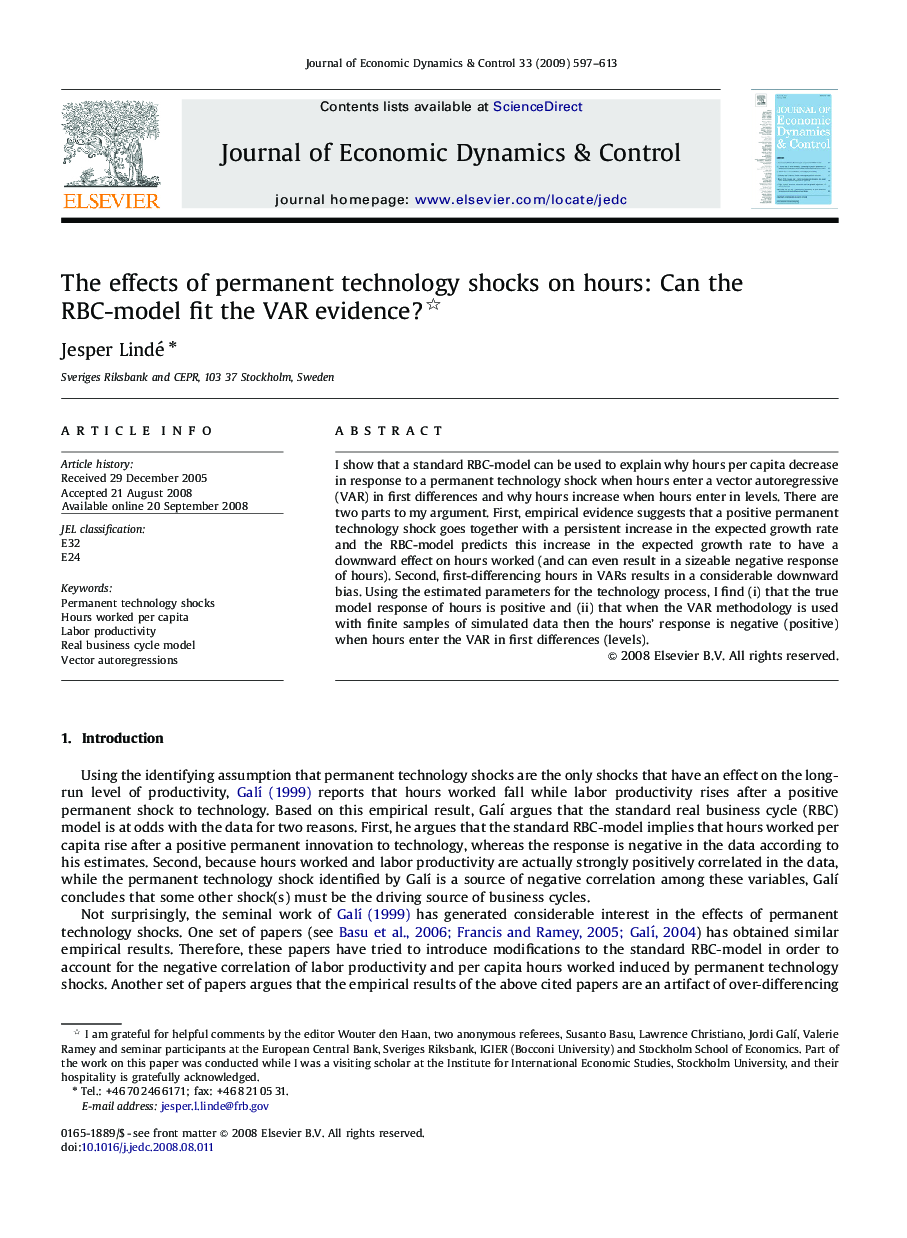| Article ID | Journal | Published Year | Pages | File Type |
|---|---|---|---|---|
| 5099202 | Journal of Economic Dynamics and Control | 2009 | 17 Pages |
Abstract
I show that a standard RBC-model can be used to explain why hours per capita decrease in response to a permanent technology shock when hours enter a vector autoregressive (VAR) in first differences and why hours increase when hours enter in levels. There are two parts to my argument. First, empirical evidence suggests that a positive permanent technology shock goes together with a persistent increase in the expected growth rate and the RBC-model predicts this increase in the expected growth rate to have a downward effect on hours worked (and can even result in a sizeable negative response of hours). Second, first-differencing hours in VARs results in a considerable downward bias. Using the estimated parameters for the technology process, I find (i) that the true model response of hours is positive and (ii) that when the VAR methodology is used with finite samples of simulated data then the hours' response is negative (positive) when hours enter the VAR in first differences (levels).
Related Topics
Physical Sciences and Engineering
Mathematics
Control and Optimization
Authors
Jesper Lindé,
